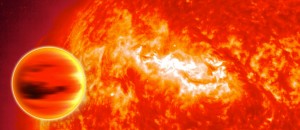Worlds beyond the solar system
Once upon a time — about 20 years ago — kids in school learned about nine planets: Mercury, Venus, Earth, Mars, Jupiter, Saturn, Uranus, Neptune and Pluto. The Nine orbited the sun, and they were the only planets that mattered. Any others existed in the imagination of children or in science fiction books and movies. The Star Trek crew, for instance, regularly visited distant worlds populated by aliens. And the good guys in Star Wars fled to forested or icy planets to escape the bad guys in a galaxy far, far away.
Your parents, however, probably remembered the names and order of the real planets in our solar system by reciting the sentence: My Very Excellent Mother Just Served Us Nine Pizzas. The first letter of each word stood for a planet, and their order reflected the declining proximity of those planets to the sun — Mercury, Venus, Earth and so on.
But things have changed, and the reign of the Nine is officially over. Most famously, Pluto was demoted to “dwarf planet” status in 2006. Bigger shifts in our understanding of the planetary population, however, actually began a decade earlier… Read more in this feature at Science News for Kids.
